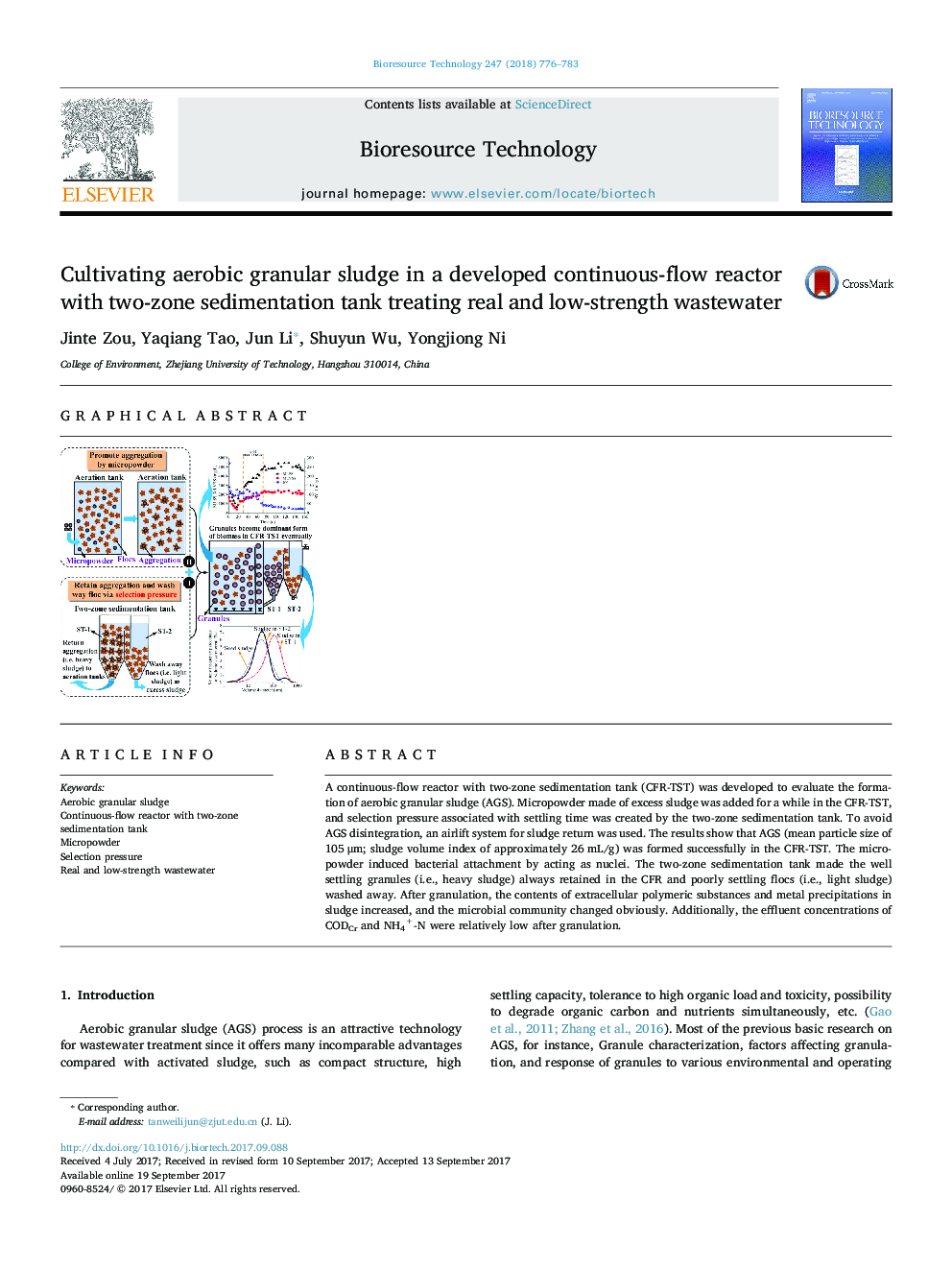| Article ID | Journal | Published Year | Pages | File Type |
|---|---|---|---|---|
| 4996705 | Bioresource Technology | 2018 | 8 Pages |
â¢Granules is formed successfully in CFR-TST treating real and low-strength wastewater.â¢Micropowder acting as nuclei can promote bacteria attachment in conventional CFR.â¢Two-zone sedimentation tank (TST) can create selection pressure in conventional CFR.â¢TST make well settling granules retained in CFR and poorly settling flocs washed out.
A continuous-flow reactor with two-zone sedimentation tank (CFR-TST) was developed to evaluate the formation of aerobic granular sludge (AGS). Micropowder made of excess sludge was added for a while in the CFR-TST, and selection pressure associated with settling time was created by the two-zone sedimentation tank. To avoid AGS disintegration, an airlift system for sludge return was used. The results show that AGS (mean particle size of 105 μm; sludge volume index of approximately 26 mL/g) was formed successfully in the CFR-TST. The micropowder induced bacterial attachment by acting as nuclei. The two-zone sedimentation tank made the well settling granules (i.e., heavy sludge) always retained in the CFR and poorly settling flocs (i.e., light sludge) washed away. After granulation, the contents of extracellular polymeric substances and metal precipitations in sludge increased, and the microbial community changed obviously. Additionally, the effluent concentrations of CODCr and NH4+-N were relatively low after granulation.
Graphical abstractDownload high-res image (140KB)Download full-size image
